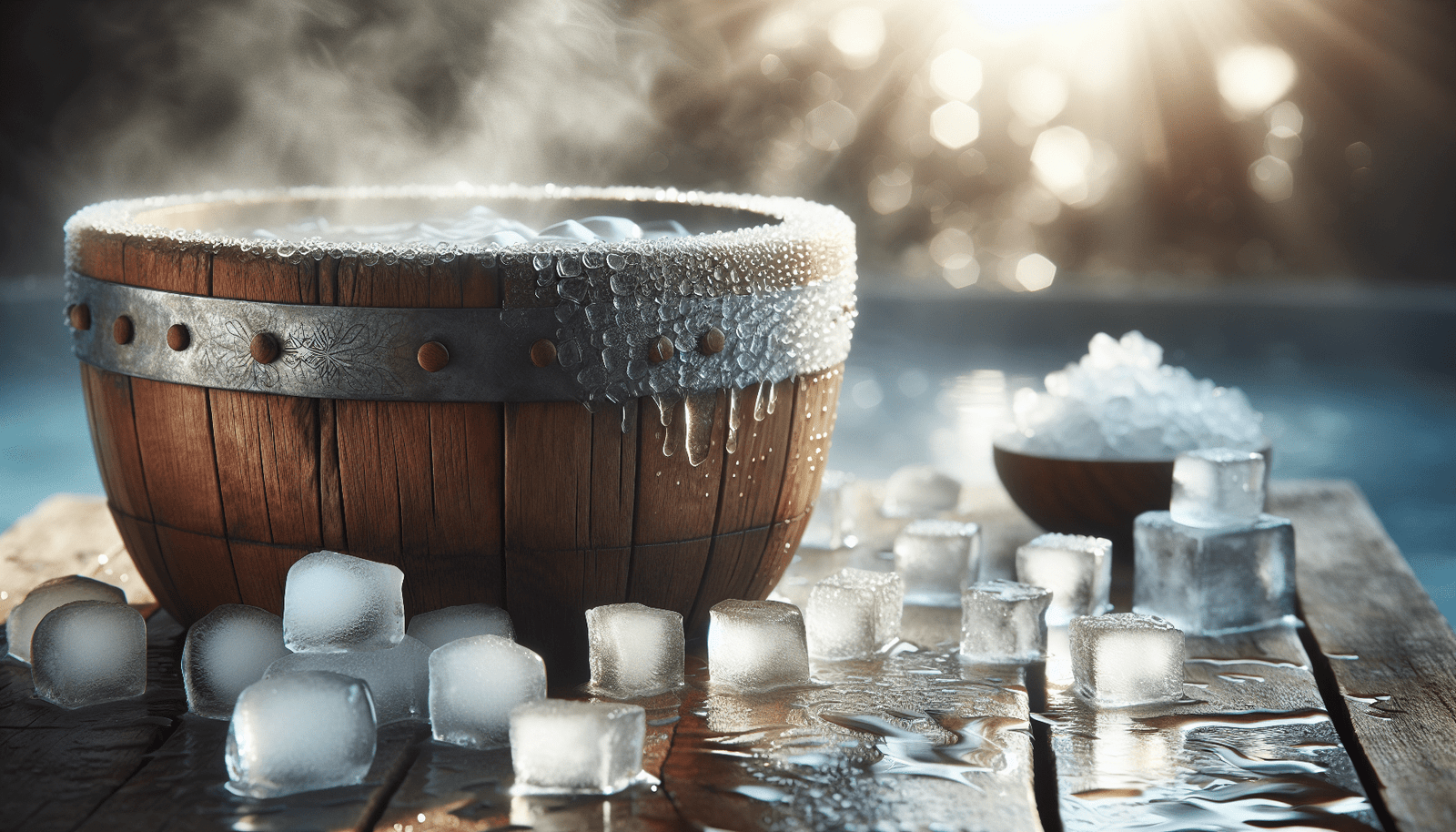Have you ever wondered why so many athletes and fitness enthusiasts swear by cold plunges for muscle recovery? It might seem counterintuitive to plunge your tired, sore muscles into icy water after a workout. Yet, this practice has been gaining traction for its supposed benefits in enhancing muscle repair and growth. In this article, you’ll gain a deeper understanding of what cold plunges are, how they work, and why they might be worth incorporating into your post-exercise routine.

What Are Cold Plunges?
Cold plunges, also known as ice baths or cold water immersion, involve submerging your body in cold water (typically around 50-59°F or 10-15°C) for a specific period, usually ranging from 5 to 20 minutes. This practice has been used for centuries, from ancient Roman baths to modern-day athletic training.
Why Cold Plunges?
The primary idea behind cold plunges is to promote muscle recovery and enhance performance. But what does the science say? By exposing your body to cold temperatures after intense physical activity, various physiological responses are triggered that can aid in reducing muscle soreness and speeding up recovery times. Let’s break down how this works.
How Cold Plunges Aid Muscle Repair
Muscle repair is a crucial aspect of fitness, as your muscles need to recover and rebuild stronger after exercise. Here’s how cold plunges can assist in this process:
Reducing Inflammation
When you exercise, especially during high-intensity workouts, your muscles experience microscopic tears. While this is normal and essential for muscle growth, it also leads to inflammation. Cold water immersion helps to constrict blood vessels, reducing blood flow to the affected areas and subsequently decreasing inflammation and swelling.
Enhancing Circulation
Once you exit the cold water, your body begins to warm up, causing blood vessels to dilate. This process improves blood circulation, which brings more oxygen and nutrients to your muscles, aiding in the repair process.
Minimizing DOMS
Delayed Onset Muscle Soreness (DOMS) can be a real setback, making it hard to stick to your fitness routine. Cold plunges can minimize the severity of DOMS by numbing nerve endings, which reduces the sensation of pain.
The Science Behind It
Research on cold plunges shows mixed results, but many studies point to potential benefits. For instance, a meta-analysis published in “Sports Medicine” found that cold water immersion may be effective in reducing muscle soreness and improving muscle function post-exercise.
Cold Plunges and Muscle Growth
When it comes to muscle growth, the role of cold plunges is more nuanced. Here’s what you need to consider:
Promoting Recovery
Faster recovery times mean you can hit the gym more frequently, which in turn can contribute to muscle growth over time. By reducing soreness and inflammation, cold plunges allow for more consistent and effective training sessions.
Hormonal Responses
Exposing your body to cold temperatures can also impact your hormonal balance. Cold plunges can stimulate the release of norepinephrine, a hormone that can improve focus and energy levels, indirectly supporting better workout performance.
Potential Downsides
Some research suggests that cold water immersion may blunt the anabolic signaling pathways that promote muscle growth. A study published in the “Journal of Physiology” found that cold plunges could potentially interfere with muscle protein synthesis if used immediately after resistance training. Therefore, it’s crucial to balance the frequency and timing of your cold plunges to maximize benefits while minimizing drawbacks.
Practical Guidelines for Cold Plunging
Alright, you’re intrigued by the benefits and ready to give cold plunges a try. Here are some practical tips to get started:
When to Take a Cold Plunge
timing is key. For general recovery, taking a cold plunge within 30 minutes to an hour after your workout can be beneficial. If you’re concerned about its potential impact on muscle growth, you might opt to schedule them on rest days or after less intense workouts.
How Long and How Cold?
A typical cold plunge lasts between 5 to 20 minutes. Water temperatures should ideally be between 50-59°F (10-15°C). Start with shorter durations and gradually increase as your body adapts.
Safety First
Always consult with a healthcare provider before starting any new recovery practices, especially if you have underlying health conditions. Cold plunges can be intense, so it’s important to listen to your body and avoid pushing yourself too hard.

Alternatives to Cold Plunges
Maybe you’re not ready to take the plunge—literally. That’s okay! There are other methods to promote muscle recovery and growth that you might find more accessible.
Contrast Baths
Contrast baths involve alternating between hot and cold water immersions. This can offer similar benefits to cold plunges by enhancing circulation and reducing muscle soreness, with the added comfort of warmth.
Compression Garments
Wearing compression garments post-exercise can help reduce swelling and muscle soreness by improving blood flow and supporting muscle tissue.
Active Recovery
Light activities like walking, stretching, or yoga can also facilitate muscle recovery by promoting blood circulation without the intensity of cold plunges.
Conclusion
Cold plunges offer a unique and effective method for enhancing muscle repair and growth, primarily by reducing inflammation, minimizing soreness, and improving circulation. While they may not be a one-size-fits-all solution, incorporating them mindfully into your recovery routine can yield notable benefits. Remember to balance their use with other recovery strategies to optimize your overall fitness and well-being. If nothing else, the invigorating experience can be a refreshing way to wrap up a tough workout!

